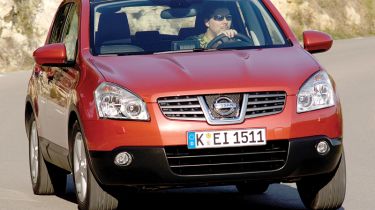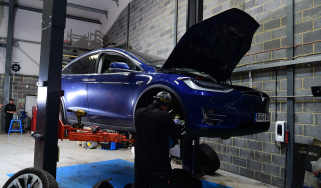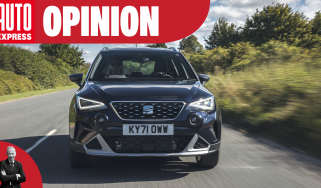Nissan Qashqai
The Qashqai is roomier than your average hatchback and more manoeuvrable than an SUV

Offering greater space than a regular hatchback, but more compact and manoeuvrable than an SUV, the Qashqai really is the best of both worlds. It rides and handles as well as leading hatch rivals, but from behind the wheel the driver gets a more commanding view of the road. It's practical, too, with a good boot, and a top class interior which offers generous head and legroom for five.
There's a C-word which is banned in Nissan's design studio - conventional. Following the demise of the Almera and most recently the Primera, Nissan doesn't conform to traditional new car categories.
Instead, it produces models such as the Note and Murano, which straddle class boundaries. The latest piece of this jigsaw is the Qashqai, a car that further blurs the lines between a standard hatchback and an off-roader.
It's marketed by the Japanese manufacturer as an alternative to the norm. Nissan aims to tempt buyers away from Ford's Focus and VW's Golf, but it also counts the Toyota RAV4 as a rival. The first thing to report is that the Qashqai is certainly not an off-roader. It does have plastic side cladding and chunky lower bumpers, but these are more for visual effect than anything else.
The raised ground clearance and overall height also add to the SUV look. But while it is available with Nissan's All-Mode 4x4 system, it's the cheaper front-wheel-drive variants which will make up 95 per cent of UK sales.
As with the Murano, it's designed primarily for on-road use, and there are definite parallels between the Qashqai and its bigger brother - viewed in profile, the high shoulder line and upswept rear window are both familiar. The striking front, with its raked headlights, prominent Nissan badge and twin bonnet ridges, adds to the athletic look.
The car will be offered with three engines when launched in February. There are two petrol units - an 113bhp 1.6-litre and 138bhp 2.0-litre - and one diesel, the 105bhp 1.5 dCi. The 148bhp 2.0 oil-burner will arrive in June.
Used - available now

2022 Nissan
Qashqai
38,898 milesAutomaticPetrol1.3L
Cash £19,803
2018 Nissan
Qashqai
28,635 milesManualPetrol1.3L
Cash £14,003
2022 Nissan
Qashqai
30,337 milesAutomaticPetrol1.3L
Cash £20,548
2017 Nissan
Qashqai
45,639 milesManualDiesel1.5L
Cash £10,200While the smaller petrol unit is expected to account for the majority of sales, it's the larger diesel which is our pick of the line-up. The Renault-sourced unit is punchy, responsive and superbly refined. Its 320Nm of torque peaks at only 2,000rpm, but it doesn't run out of breath further up the rev range.
The Nissan's interior is logically laid out - if a little plain - and the build quality is top-notch, with soft-touch plastics and well damped switchgear. There is plenty of storage, too, with a large glovebox and decent door pockets.
So are there any downsides? Rear visibility is slightly hampered by the thick C-pillars, and there are no clever sliding back seats - only a standard 60:40 split bench. There will be few complaints about the Qashqai's handling, though, as it offers precise cornering and well weighted, albeit slightly lifeless steering. Body control is impressive, considering its relatively high centre of gravity, and so is the ride, which smooths out uneven road surfaces and potholes.
Prices start at £13,499 for the 1.6-litre petrol, rising to £23,249 for the top-spec 2.0-litre dCi auto. But even entry-level models are well equipped, with electric windows, alloys, air-con, a CD player and Bluetooth connection included. The only disappointment is that ESP isn't standard across the range.
The Qashqai certainly has what it takes to woo a typically conservative market with its unconventional shape. There's no doubt it's a strong rival to the likes of the Focus and Golf.







